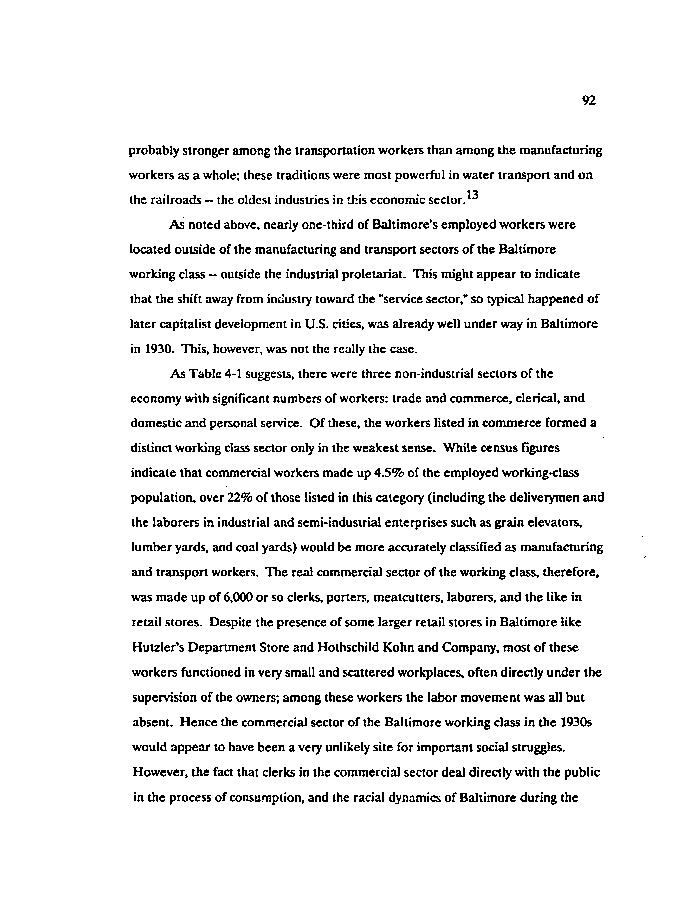|
92
probably stronger among the transportation workers than among the manufacturing
workers as a whole; these traditions were most powerful in water transport and on
1 *^
the railroads — the oldest industries in this economic sector.IJ
As noted above, nearly one-third of Baltimore's employed workers were
located outside of the manufacturing and transport sectors of the Baltimore
working class ~ outside the industrial proletariat. This might appear to indicate
that the shift away from industry toward the "service sector," so typical happened of
later capitalist development in U.S. cities, was already well under way in Baltimore
in 1930. This, however, was not the really the case.
As Table 4-1 suggests, there were three non-industrial sectors of the
economy with significant numbers of workers: trade and commerce, clerical, and
domestic and personal service. Of these, the workers listed in commerce formed a
distinct working class sector only in the weakest sense. While census figures
indicate that commercial workers made up 4.5% of the employed working-class
population, over 22% of those listed in this category (including the deliverymen and
the laborers in industrial and semi-industrial enterprises such as grain elevators,
lumber yards, and coal yards) would be more accurately classified as manufacturing
and transport workers. The real commercial sector of the working class, therefore,
was made up of 6,000 or so clerks, porters, meatcutters, laborers, and the like in
retail stores. Despite the presence of some larger retail stores in Baltimore like
Hutzler's Department Store and Hothschild Kohn and Company, most of these
workers functioned in very small and scattered workplaces, often directly under the
supervision of the owners; among these workers the labor movement was all but
absent. Hence the commercial sector of the Baltimore working class in the 1930s
would appear to have been a very unlikely site for important social struggles.
However, the fact that clerks in the commercial sector deal directly with the public
in the process of consumption, and the racial dynamics of Baltimore during the
|

